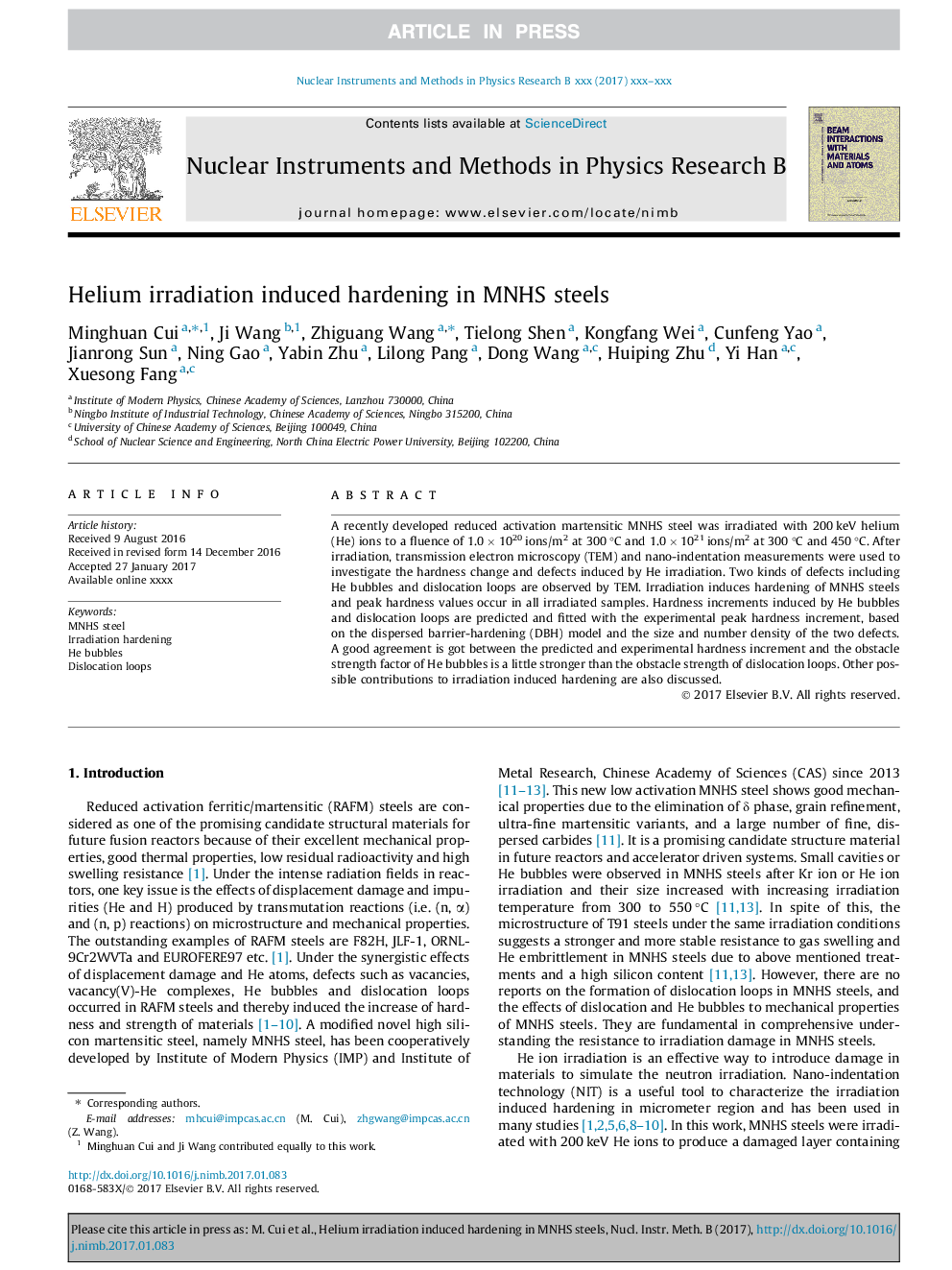| Article ID | Journal | Published Year | Pages | File Type |
|---|---|---|---|---|
| 5467586 | Nuclear Instruments and Methods in Physics Research Section B: Beam Interactions with Materials and Atoms | 2017 | 7 Pages |
Abstract
A recently developed reduced activation martensitic MNHS steel was irradiated with 200 keV helium (He) ions to a fluence of 1.0 Ã 1020 ions/m2 at 300 °C and 1.0 Ã 1021 ions/m2 at 300 °C and 450 °C. After irradiation, transmission electron microscopy (TEM) and nano-indentation measurements were used to investigate the hardness change and defects induced by He irradiation. Two kinds of defects including He bubbles and dislocation loops are observed by TEM. Irradiation induces hardening of MNHS steels and peak hardness values occur in all irradiated samples. Hardness increments induced by He bubbles and dislocation loops are predicted and fitted with the experimental peak hardness increment, based on the dispersed barrier-hardening (DBH) model and the size and number density of the two defects. A good agreement is got between the predicted and experimental hardness increment and the obstacle strength factor of He bubbles is a little stronger than the obstacle strength of dislocation loops. Other possible contributions to irradiation induced hardening are also discussed.
Related Topics
Physical Sciences and Engineering
Materials Science
Surfaces, Coatings and Films
Authors
Minghuan Cui, Ji Wang, Zhiguang Wang, Tielong Shen, Kongfang Wei, Cunfeng Yao, Jianrong Sun, Ning Gao, Yabin Zhu, Lilong Pang, Dong Wang, Huiping Zhu, Yi Han, Xuesong Fang,
